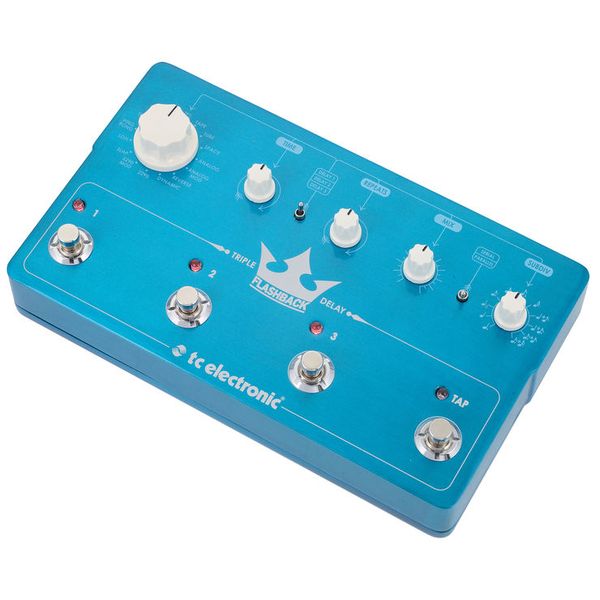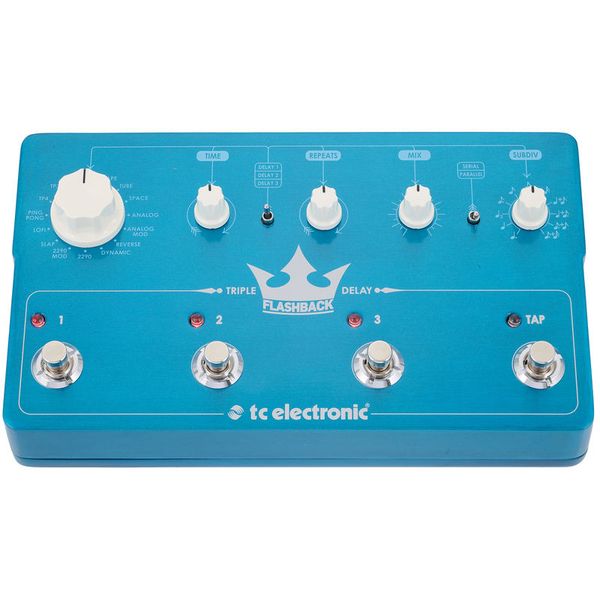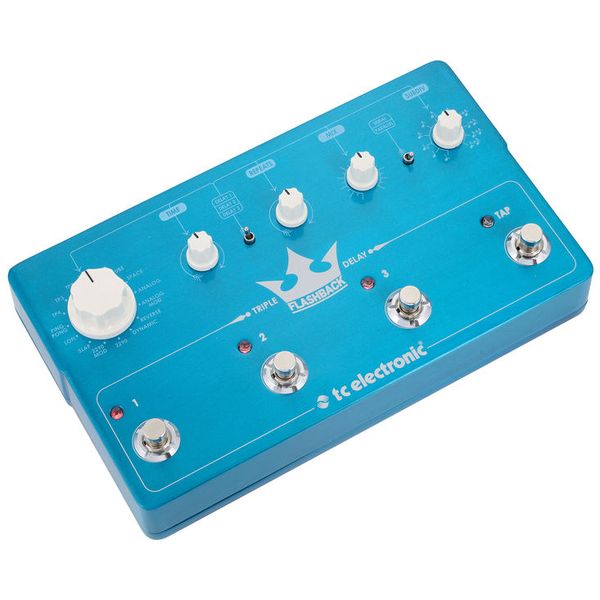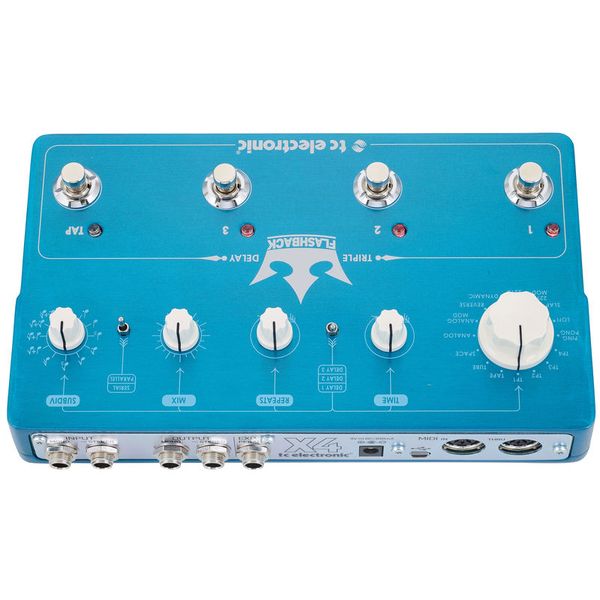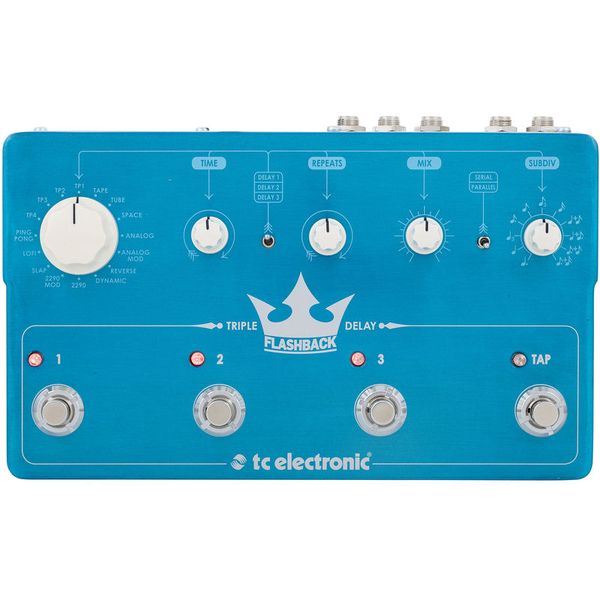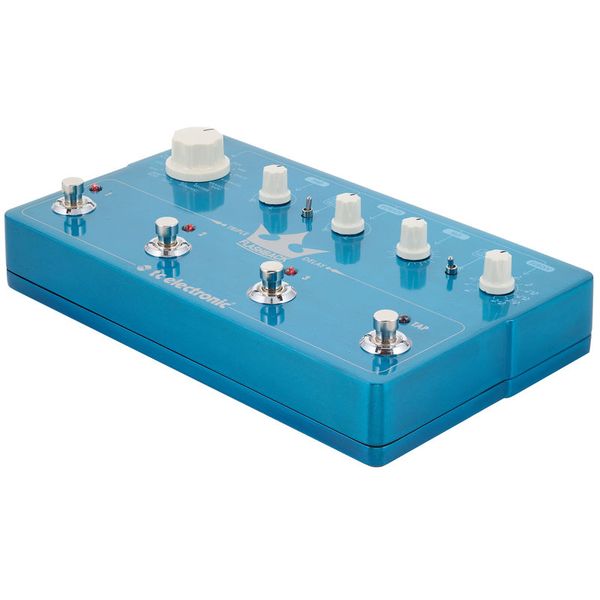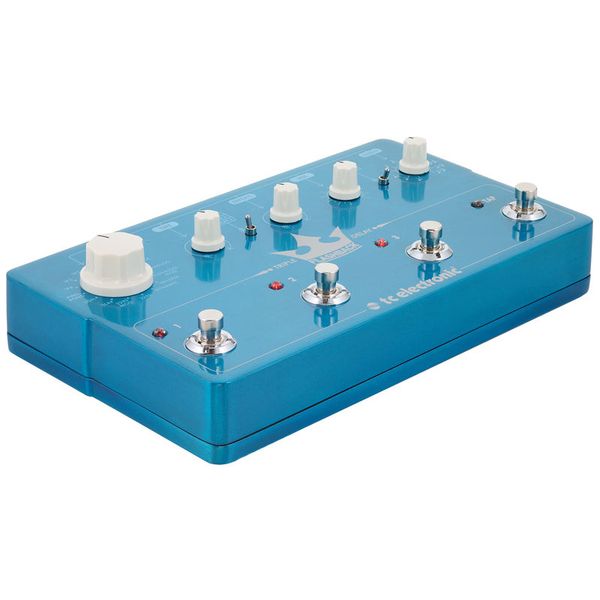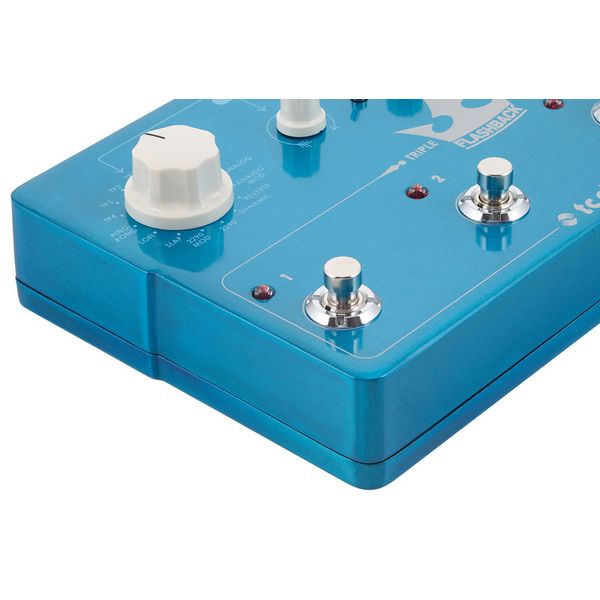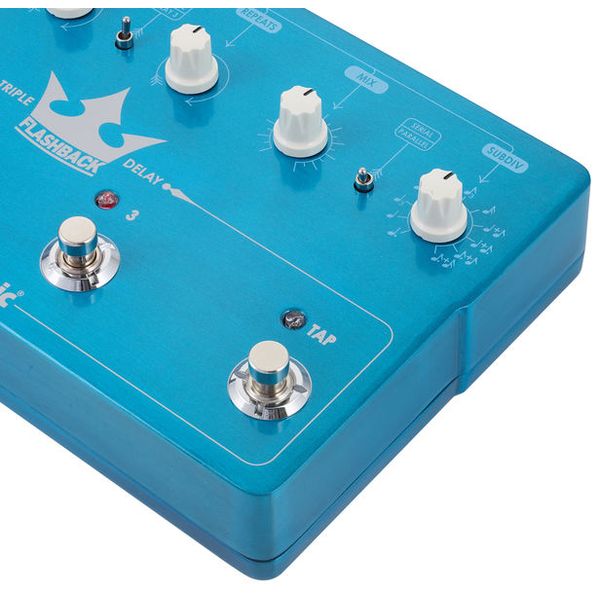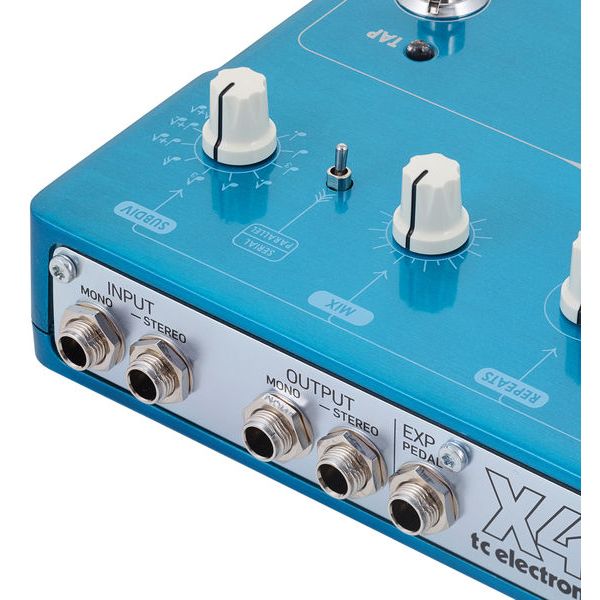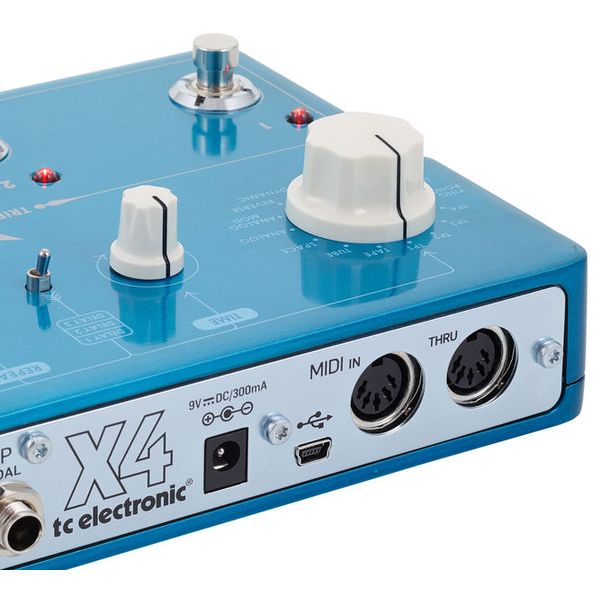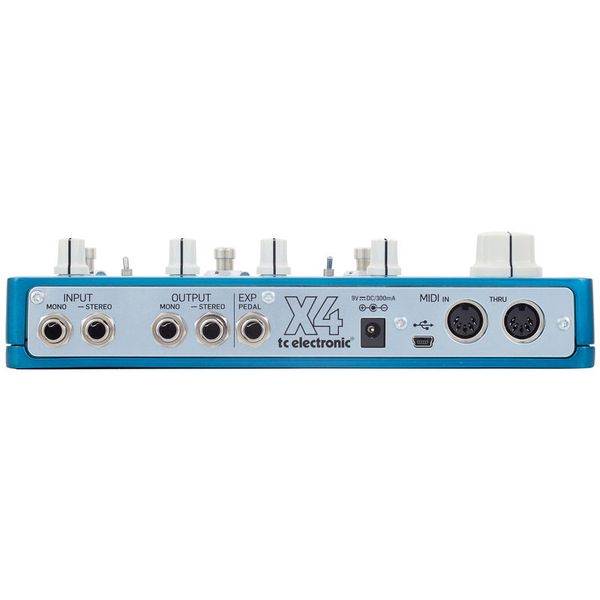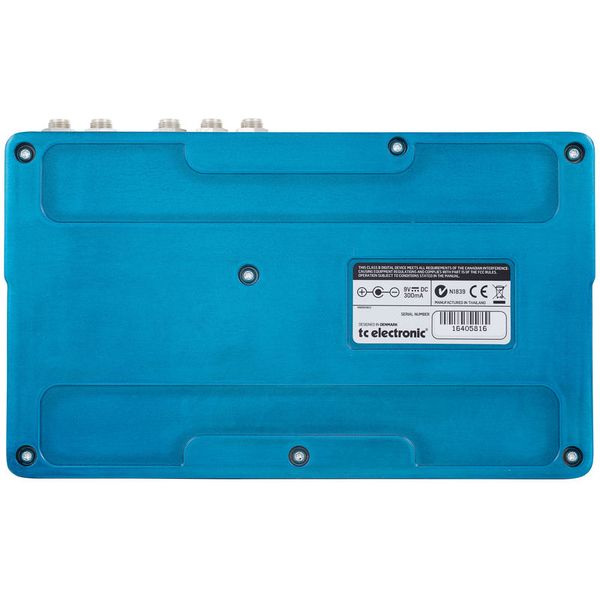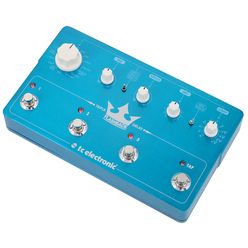At first sight the TC Electronic Flashback Triple Delay seems like a fantastic solution. Three totally separate delays with your choice of echo type, repeats and volume that can be activated individually or in any combination together, either in parallel or in series, PLUS a Tap function that all three delay engines conform to. And it has True Bypass when no delays are activated.
Once you get into it though, the cracks start to show. The first thing is really just a niggle. But annoying just the same. When any of the delays are edited, you cannot compare it to what you had before and you must save it if you do not want to lose the new setting. Saving it will overwrite the previous setting, which is now lost forever. If you do not save your edit and switch that delay off, all of your editing is lost and that delay will return to the previously saved settings.
It would be helpful to be able enter an 'edit compare mode' in order to test your new settings before overwriting the previous saved version.
To be fair, in practice it is unlikely that you would be changing the basic settings of each delay once you have had time to get accustomed to the whole unit and have arrived at your preferred general settings.
The second thing is MAJOR. Or at least, it is to me.
The True Bypass works a treat and your pristine, breathing guitar sound is absolutely unaltered when all the delays are off. But as soon as one or more delay is activated, your clean guitar sound goes down the tube. Not a very large tube, but still, the edge is taken off the highs and there is a general vaguely electonicky sort of air to the whole sound.
It is quite okay for the tone of the wet sound to be different from the dry sound because, after all, if you have selected tape echo as the tonal characteristic of the echo, the wet sound is going to sound very different to the dry.
What I did not appreciate is that the original guitar tone gets muddied when a delay is activated and this is not OK.
For example, if you turn the echo volume down, so that only the dry sound will be audible, your guitar sound suddenly goes slightly dull when you activate any of the three delays.
If crystal sound is not your thing then this would not bother you, but for me this is a deal breaker and I was very disappointed to have to send it back, because otherwise it really was ticking every box.
EDIT: After sending this unit back, I re-purchased it a couple of weeks later because, despite the failings I had experienced, it still intrigued me.
Quite some time later my original reservations still annoy me, plus the fact that, in a live situation, quick adjustment of a parameter on any one of the three delays is a nightmare. This is because each of the three delays use the same parameter knobs, with a three-position switch to allocate the knobs to the delay to be adjusted.
This means that the position of the knobs will never reflect the value of a particular parameter for a particular delay engine/preset.
The only thing to do was buy three Flashback2 pedals, so that the parameter knobs accurately reflect each delay's settings. The one obvious difference between three separate stomp boxes and the FB Triple is that the stomp boxes will always run the delays in Series, whereas the FB Triple offers the option for the three delays to also be run in Parallel.
But there is another significant difference. I tend to use the 'Tape' option mostly and the echo tone of the FB2 stomp boxes is totally different to the FB Triple. The individual repeats are warmer and break up quicker on the FB2, making the Triple sound a bit more clinical in comparison.
Whether you will prefer the cleaner sound of the FB Triple or the warmer, slightly trashed sound of the FB2 will be your preference.
I like them both so, unfortunately for my pocket but great news for TC Electronic, I have decided to keep them all !!





